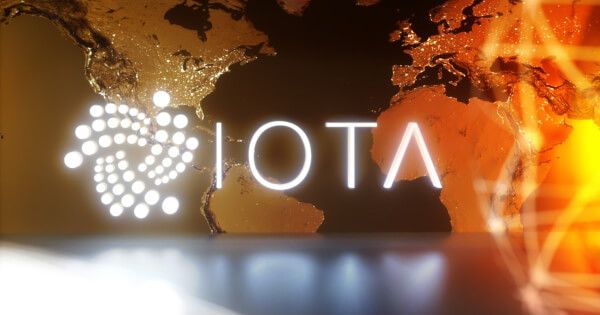History of Renewable Energy

Renewable energy is critical to combating climate change and global warming. The use of clean and renewable energy sources, such as solar, wind, and hydropower, began in early human history. How the world harnesses the power of these resources to meet its energy needs has evolved over time. Here’s a brief look at the global energy sector and how different forms of renewable power generation have evolved to diversify the world’s energy supply.
solar energy
Efforts to harness the power of the sun date back to ancient times, when the ancient Greeks and Romans used burning mirrors (concave mirrors that focus the sun’s rays) to light torches. The world’s first known solar collector, a device that collects solar radiation, was invented in 1767 and was later used to cook food. Then, in the late 1800s, the first commercial solar water heaters and the first solar cells, devices that could convert light into electricity, appeared.
According to the United Nations’ Intergovernmental Panel on Climate Change, the 1950s marked the modern era of solar research with the establishment of the International Solar Energy Society and greater research and development of solar energy across multiple industries. It is done. In the early 1960s, solar energy (concentration of sunlight to generate heat) became widely used to provide hot water to homes in Israel, and solar cells, also known as photovoltaic cells, became more efficient. The energy crisis and surge in oil prices in the 1970s further promoted solar energy development as more countries invested in solar technology as an alternative energy source to fossil fuels.One
Since the 1990s, continued innovation in energy production and government energy policies, including tax incentives, have promoted the growth of the solar energy industry and solar energy use. Construction of large-scale solar power plants, including solar power plants, has begun, and distributed solar power generation, which generates electricity at residences and businesses through solar panels installed on rooftops, has expanded. Solar power has also become a source of energy for electric vehicles, with drivers charging their cars through rooftop systems at their homes and through solar public charging stations. In 2022, solar power generation will reach approximately 1300 terawatt-hours of power, a 26% increase over the previous year.2
Demand for solar energy is driven in part by companies looking to switch to renewable energy sources to meet their ESG goals. For some, solar energy production has become an in-house operation. Companies such as GPT Group, a diversified asset group listed on the Australian Stock Exchange (ASX), have installed solar power arrays on site. To track the results of these efforts, including energy efficiency and emissions reductions, GPT Group deploys SaaS tools that integrate corporate ESG data for analysis and reporting.
wind energy
Humans have long used wind energy for mechanical purposes. Simple windmills in China were used to pump water, and vertical axis windmills were used to grind grain in the Middle East as early as 200 BC. The Middle East also became home to food production using windmills in the 11th century. Later in Europe, the Dutch converted windmills for a variety of industrial uses, including papermaking and lake drainage. And in the 19th century, settlers in the Americas used windmills to pump water for agriculture.three
Eventually, the use of wind energy shifted from mechanical applications to electricity production. Electrical engineer James Blyth is credited with building the world’s first wind turbine in his backyard in Scotland in 1887, while fellow wind energy innovators Charles Brush and Poul la Cour built the first in Ohio and Denmark, respectively, before the end of 2008. We built our own turbines. 19th century. Blyth later built a second wind turbine to power a local mental hospital, Brush used his wind turbine to power his mansion, and la Cour harnessed wind power to set a school on fire. Attached.4
However, it took several decades for wind power to achieve commercial-scale viability. Like solar power, the energy crisis of the 1970s led to increased interest in wind power. Denmark has emerged as an early leader in commercial wind power, as Danish government policies support the development of the Danish wind industry. Then, in the 1980s, utility-scale wind farms were installed in California, and in the 1990s, wind farms were installed in Germany and Spain.
Today, wind turbines around the world produce more than 2,100 terawatt hours (TWh) of electricity per year. Although most turbines are located on land, offshore wind farms have played a growing role in global electricity production in recent years, accounting for 18% of wind power capacity growth in 2022.5
hydroelectric power
As the prefix “hydropower” suggests, hydroelectric power is energy derived from water, especially the flow of water. As with wind energy, humans have been utilizing mechanical applications of hydroelectric power for a long time. For example, the ancient Greeks used water power to build watermills to grind wheat into flour.6
However, the use of water power to produce electricity did not become common until much later. Innovations in water turbine technology occurred throughout the 1800s, including the Francis turbine, invented by British-American engineer James Francis and still widely used today. By the late 1800s, these innovations ranged from a project that powered a single lamp in a British home in 1878 to a full-scale hydroelectric power plant with a capacity of 12.5 kW that powered two paper mills and a paper mill four years later. It culminated in a power generation project. residence.6, 7
Soon countries around the world, from Australia to Canada, were home to hydroelectric projects. After World War II, hydropower development accelerated through state-owned projects in Europe, North America, Japan, and the former Soviet Union. The two largest hydroelectric projects in the world today are dams in South America and China. The 14,000-megawatt Itaipu Dam on the Parana River on the border of Brazil and Paraguay and the 22,500-megawatt Three Gorges Dam along the Yangtze River in China.
Hydroelectric power plays an important role not only in producing electricity but also in storing energy. With pumped hydro, a model of energy storage that dates back to the 1890s, water flows between two reservoirs at different elevations. If power is abundant from other sources (e.g. solar power, wind farms), the power is used to pump water into the upper reservoir. As needed, water is released from the upper reservoir back into the lower reservoir to generate electricity, “essentially filling the gap during peak demand,” according to the U.S. Department of Energy (DOE).8
geothermal energy
Geothermal energy comes from heat inside the Earth. It can be used for heating and cooling of buildings and for generating electricity (geothermal power). Humans have been utilizing geothermal energy since the Paleolithic era, when hot springs were used for bathing. However, the first known commercial use of geothermal energy did not occur until 1830, when people could pay $1 to bathe in a bathhouse fed by three hot springs in the city of Hot Springs, Arkansas. About 60 years later, the worst of the first district heating systems was installed in Boise, Idaho, supplying hot spring water to more than 200 homes and businesses.9
But despite all of America’s geothermal innovations, Europeans established the first geothermal power plants. In 1904, Italian Prince Piero Conti experimented with geothermal power using steam from the Larderello geothermal field in Tuscany to power a light bulb. His work later culminated in the construction of a commercial power plant that supplied steam to the area.
Today, geothermal energy systems help meet a significant portion of the energy needs of countries around the world. Historically, the development of geothermal power plants was limited by natural conditions, namely the anticipated location, which required natural heat, a fluid to transport that heat, and a path through the rock through which that fluid could travel. But some scientists hope that technological advances will make it possible to build geothermal power plants and consume geothermal energy in more places.
Geothermal energy can be part of the mix of renewable energy sources that companies use to achieve their ESG goals. Celestica, a multinational company specializing in design, manufacturing and supply chain solutions, has reduced its dependence on natural gas by converting to geothermal power at its facility in Oradea, Romania. The company, which has also invested in on-site solar power systems, uses software to streamline data about its renewable energy efforts.
bioenergy
Bioenergy is a renewable energy source extracted from biomass, the organic material of plants and animals. Throughout human history, people have harnessed bioenergy by burning wood to provide heat and light. Wood was the primary fuel for cooking and heating, and vegetable oil, another form of biomass, was the primary fuel for lighting lamps before the 19th century.
Biomass can be converted into liquid fuel known as biofuel. The two most common biofuels are ethanol, a type of alcohol, and biodiesel, which is produced using vegetable oil or animal fat through a chemical process known as transesterification. The use of biofuels in internal combustion engines dates back over 100 years. German mechanical engineer Rudolf Diesel, who invented the diesel engine in 1897, experimented with vegetable oil in his research, and ethanol was listed by the U.S. Department of Energy as one of the first automotive fuels. Interest in ethanol, especially as a gasoline additive, surged following the energy crisis and rising oil prices of the 1970s.
Biofuel production technologies and feedstocks continue to advance. Scientists are working to use food industry waste, plant waste and algae to overcome supply and land use constraints associated with crops used in previous generations of biofuels.10 Additionally, demand for biofuel, known as renewable diesel, has increased in recent years.
Renewable diesel is similar to biodiesel but is produced through a different chemical process. One of the reasons for this fuel’s popularity is the fact that it is a “drop-in” fuel that can be used in diesel engines without having to be mixed with petroleum diesel. For example, in 2023, a French power generation equipment manufacturer announced that it would significantly reduce greenhouse gas emissions by switching from petroleum diesel to renewable diesel for generator testing.
The Future: Technologies for Renewable Energy Transition
As more companies transition to renewable energy to meet regulatory requirements and ESG goals, data management is gaining attention to ensure sustainability efforts are on track. ESG reporting software from IBM Envizi™ integrates a suite of products that help you capture and manage all ESG data in a single system of record and report with confidence that the data is auditable and financial grade.
Explore IBM Envizi ESG Suite
(1) Direct solar energy. IPCC Special Report on Renewable Energy Sources and Climate Change Mitigation. (Link is outside ibm.com), IPCC, 2011.
(2) Solar power generation. (link external to ibm.com), International Energy Agency, 2023.
(3) Wind energy. IPCC Special Report on Renewable Energy Sources and Climate Change Mitigation. (Link is outside ibm.com), IPCC, 2011.
(4) “Let the wind blow.” (Link resides outside ibm.com), History Today, August 11, 2021.
(5) Wind. (link external to ibm.com), International Energy Agency, 2023.
(6) Hydroelectric power generation. IPCC Special Report on Renewable Energy Sources and Climate Change Mitigation. (Link is outside ibm.com), IPCC, 2011.
(7) “A Brief History of Hydroelectric Power.” (link resides outside ibm.com), International Hydropower Association.
(8) Pumped storage hydropower. (link resides outside ibm.com), U.S. Department of Energy, Office of Energy Efficiency and Renewable Energy.
(9)Energy conservation history timeline: geothermal energy (link is at external.ibm.com), energy conservation, U.S. Department of Energy.
(10) “Potential of biofuels from 1st to 4th generation.” (Link resides outside ibm.com), PLOS Biology, March 2023.
Was this article helpful?
yesno



